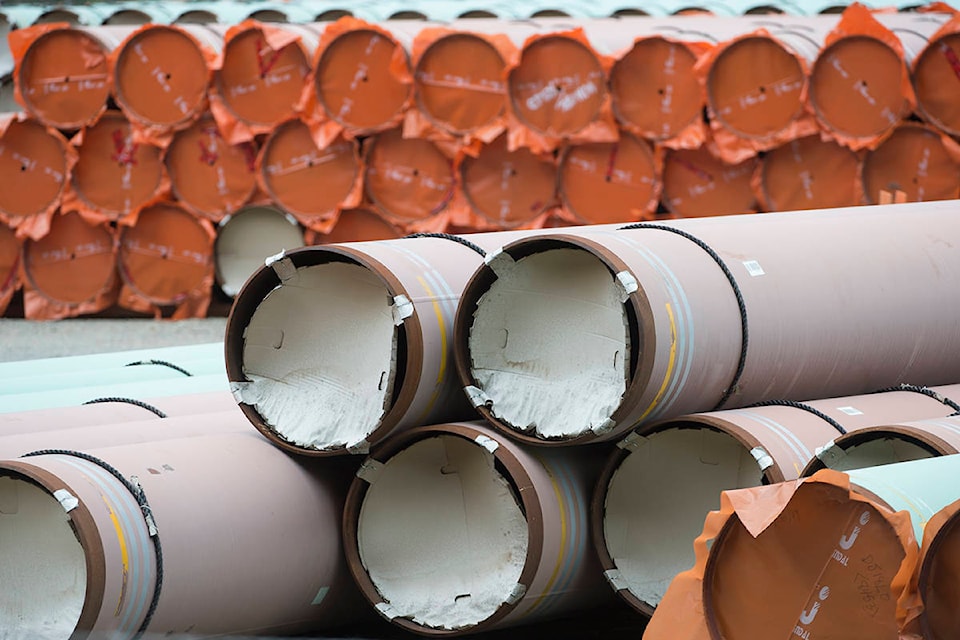Trans Mountain Expansion Project is still trying to find the heirs of a millionaire who died decades ago, but who owned a sliver of land that the pipeline has to cross in Langley.
As part of a proposal giving the detailed oil pipeline route through Langley, Trans Mountain is trying again to find James Kavanagh, a financier who has been dead for 99 years.
“Trans Mountain is seeking to locate the landowner, or heirs of the landowner, described above in order to provide them with information and this notice concerning the detailed route of the Trans Mountain Expansion Project,” the public notice reads.
“If you have a legal right to the lands described above and you wish to oppose the proposed detailed route of the Trans Mountain Expansion Project, including the method and timing of construction of the pipeline, you may file a written statement with the Canadian Energy Regulator within 30 days of the publication of this notice,” Trans Mountain wrote.
Maps of the site and notices were published in both English and French.
Kavanagh died in 1922. When he was alive, he owned property in Langley Township, near what is now 201st Street in Walnut Grove.
The millionaire hotelier, who made his fortune in Manitoba, bought the land in 1911, the year the Canadian National Railway line that still runs through North Langley was built.
The railway absorbed most of Kavanagh’s land, but it left slivers on either side, and Trans Mountain’s pipeline, which parallels the railway there, needs access to land on one side.
Trans Mountain launched an international search in 2019 for Kavanagh’s heirs, searching archives from Langley to California to Connecticut.
READ MORE: Land owned by man dead since 1922 needed for pipeline
READ MORE: Langley’s tiniest lots include land just for garbage and a pioneer cemetery
Kavanagh had relocated with his family to California shortly after the Langley land transaction, and his daughters continued to live in the U.S., and it is believed their descendants did as well.
Asked about the appeal to Kavanagh’s heirs, Trans Mountain said it is re-issuing its route notices due to a minor change to the route around the Kavanagh lands near 201st Street.
“If the revised route is approved by the Canada Energy Regulator (CER), then Trans Mountain would seek to acquire Mr. Kavanagh’s lands from his estate for construction of the Expansion Project,” a statement from the company said. “If Trans Mountain is unable to acquire Mr. Kavanagh’s lands voluntarily from Mr. Kavanagh’s estate, then it would follow the CER’s right of entry process.”
Compensation for the right of way will be paid to his estate, Trans Mountain said.
The remaining lots left over after the railway went through are tiny – one has been assessed at $200 value and covers 500 square feet, the other is assessed at $9,000 and covers 16,500 square feet.
According to correspondence between Trans Mountain and the National Energy Board, the land was surveyed in 1908. But sometime after the rail line went through in 1911 there was an error of some kind in the land title records, and Langley Township essentially forgot the property existed.
The error was not noticed until 2016. The Township then put the land back on its property tax rolls in 2017.
Have a story tip? Email: matthew.claxton@langleyadvancetimes.com
Like us on Facebook and follow us on Twitter.
